Australia’s economy is on public sector life support.
The overwhelming majority (87%) of jobs created over the past two years have been in the non-market (government-funded) sector.
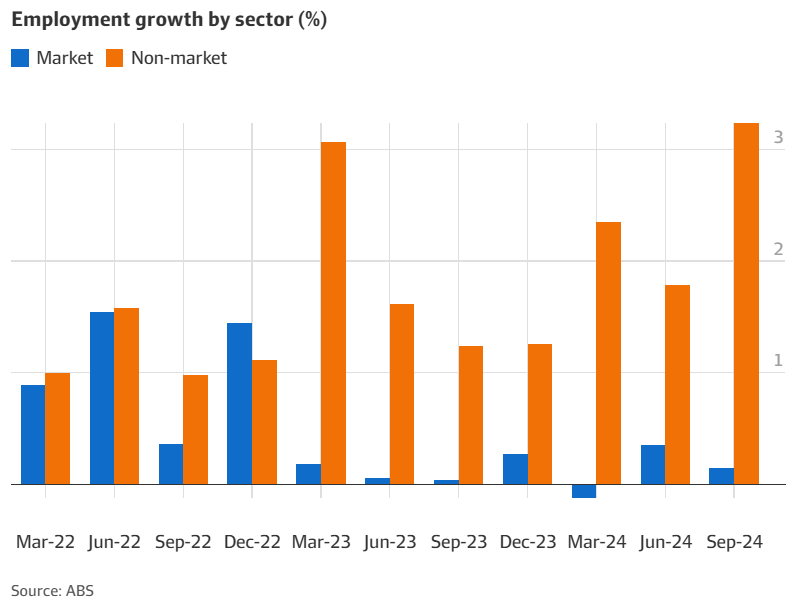
Much of this job growth has been related to the NDIS, which has driven explosive growth in the healthcare and social assistance sector.
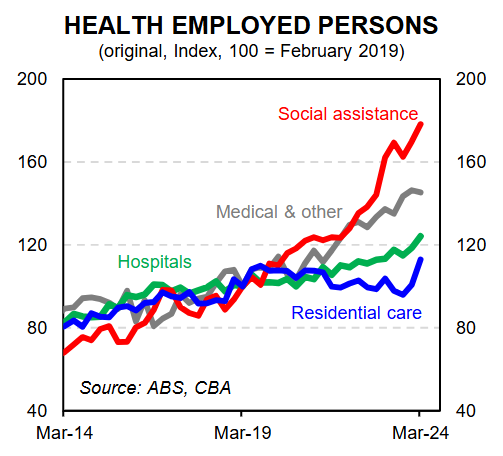
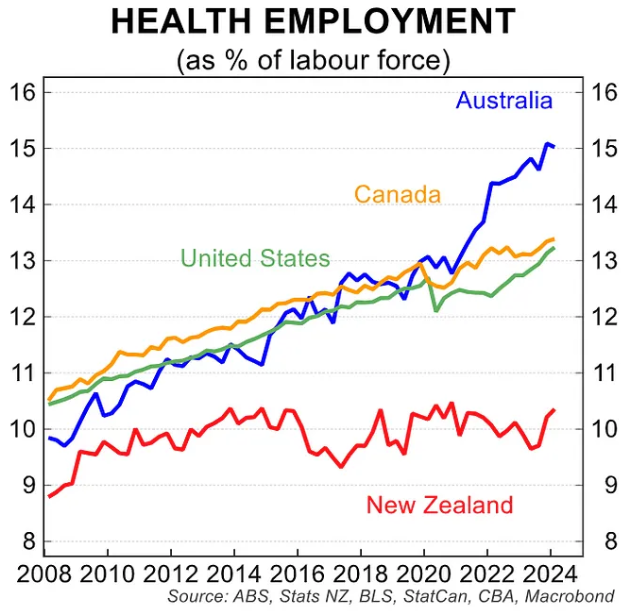
“When governments, as they often do, point to strong employment figures to boast about the jobs they personally “created”, I typically roll my eyes”, said economist Steven Hamilton last month. “Under this government, however, the claim is literally true”.
A similar thing can be said for Australia’s GDP growth, which has overwhelmingly been driven by record public spending.
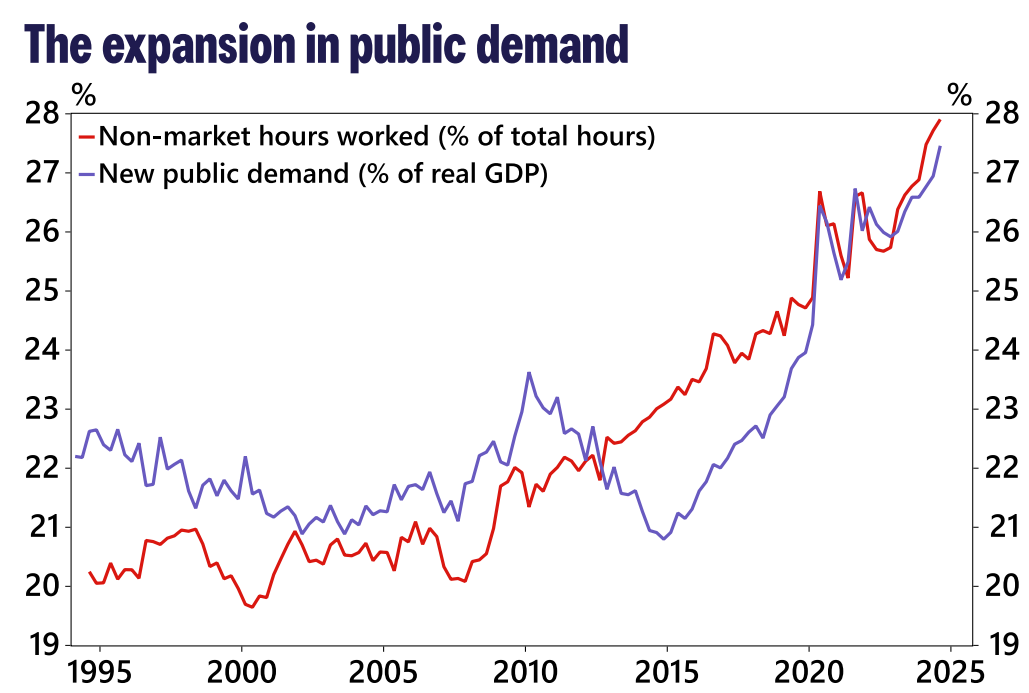
The following chart from CBA summarises the situation, with Australian government spending rising 55% in real terms since 2015, whereas overall real GDP only grew by 22%.
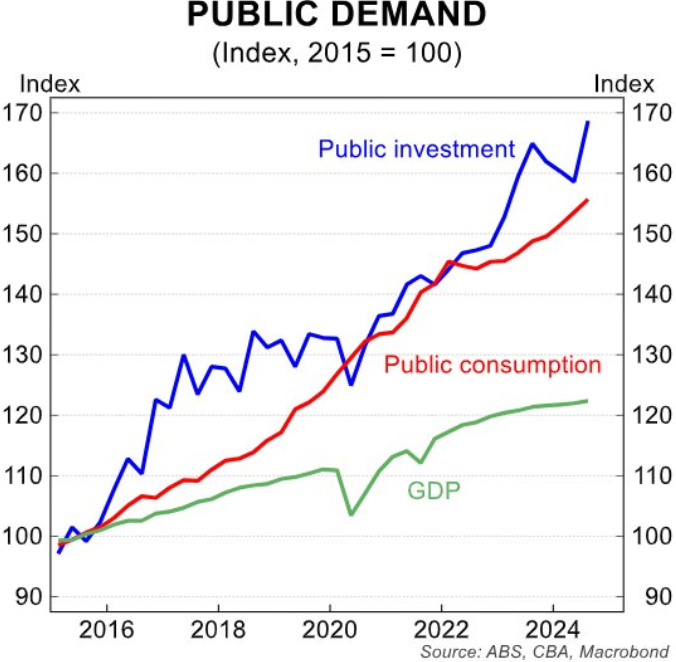
Over the weekend, outgoing NDIS minister Bill Shorten took aim at economists questioning the efficacy and sustainability of the NDIS.
Shorten credited the NDIS for generating 500,000 jobs, driving Australia’s low unemployment rate, and keeping the economy out of recession.
“Since the formation of the NDIS, a new part of the Australian economy has been created”, Shorten said.
“The NDIS employs more people directly than the mining industry. It is an unsung hero of low unemployment and employment growth over the last decade since its creation”.
Interestingly, in a separate report, Shorten admitted that the 20% annual growth in the cost of the NDIS was unsustainable.
“We want to get outcomes for people with disability. But a scheme can’t keep growing at 20% per year”, he said.
In the same report, Prime Minister Anthony Albanese also remarked that “the NDIS needs to be made sustainable”.
Meanwhile, veteran budget watcher Chris Richardson lamented that the NDIS is heavily rorted.
“I would like to think I was an early champion of the NDIS”, Richardson said.
“The concept is magnificent, but we have set up a whole bunch of incentives for state governments, for individuals, doctors, for the clients, for providers, that begs people to do the wrong thing, and they do. It is heavily rorted”.
Richardson is correct, of course. In June 2024, the NDIS integrity chief told a Senate Committee that nine out of 10 plan managers surveyed showed signs of fraud and that the justice system would be overwhelmed if all the scams carried out were prosecuted.

“These are not genuine providers, not people who should be in business, not people who should be allowed near government schemes of any kind”, NDIS integrity chief John Dardo told senators.
Economist Steve Hamilton encapsulated the problem with the following testimony last month.
“The NDIS funds 610,000 recipients to the tune of $76,000 each on average per year, and under even the most wildly optimistic forecast this will double over the next 10 years”.
“Just to fund it today, we’d need to take an additional $3400 a year from every single Australian taxpayer, and in 10 years – well, you do the maths”.
The Parliamentary Budget Office projected that the NDIS could double in cost to around $100 billion in a decade, overtaking the annual cost of the aged pension.
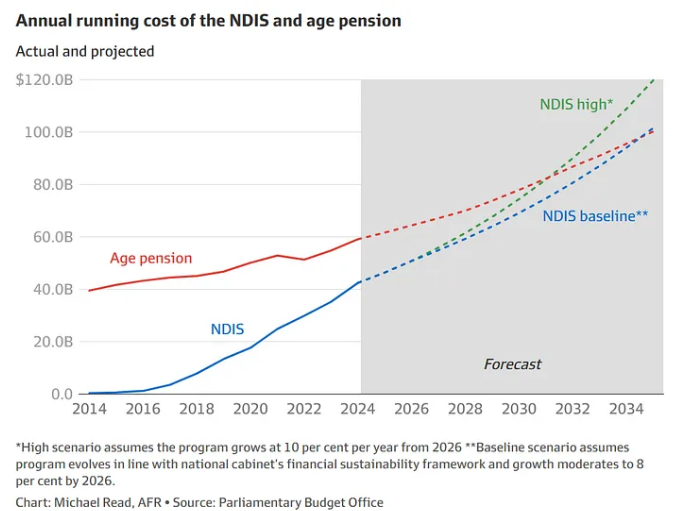
To exacerbate the situation, the NDIS-driven surge in non-market jobs has significantly reduced Australia’s labour productivity.
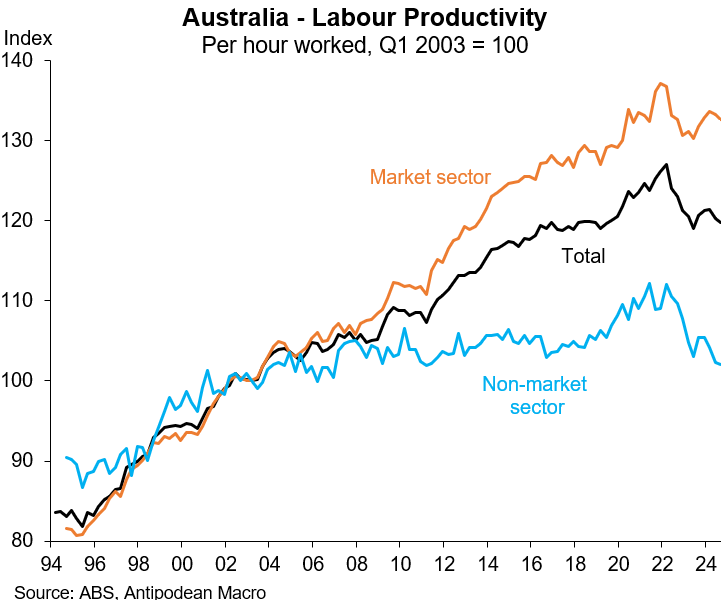
The bottom line is that the NDIS is unsustainable, which, given its gargantuan size and impact, means the Australian economy is unsustainable.

